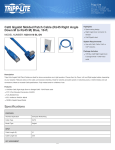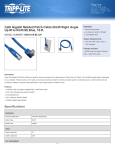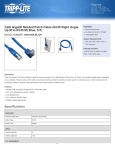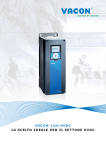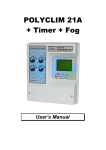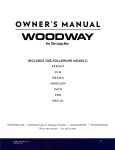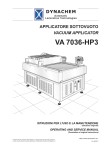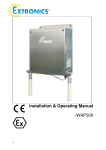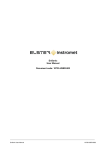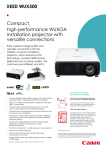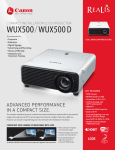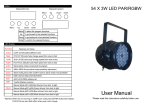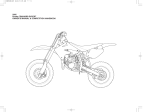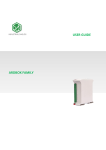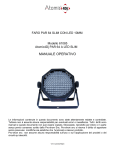Download HNP21 Manual
Transcript
HNP021 Service Manual service manual FLUID CONDITIONING PURIFIERS HNP021 Service Manual Copyright clause FLUID CONDITIONING PURIFIERS Document Number: MAN021_EN Revision Level: M Original Information Name Date Originator A.D.MIN 3 NOV 2006 Checker Approver 1 Approver 2 Approver 3 Approver 4 Approver 5 Approver 1 Approver 2 Approver 3 Approver 4 Approver 5 Revision M Information Name Date Reviser RS ARCHER 2 JUL 2007 Checker Copyright clause Reprints, even of extracts hereof, are permitted only if the source is quoted and permission has been granted by Pall. The main components, devices, arrangements, as well as software, control and instrumentation equipment on all of our machines are protected both at home and abroad by patent applications, design registrations or copyright. © Copyright by Pall Europe Limited Europa House Havant Street Portsmouth. PO1 3PD 2 MAN021_EN HNP021 Service Manual FLUID CONDITIONING PURIFIERS Contents 1 Contents 1 Contents.................................................................................................................................... 3 2 Foreword ................................................................................................................................... 5 3 4 5 6 7 2.1 Terms of Guarantee .......................................................................................................... 5 2.2 Trademarks & Intellectual Property ................................................................................... 6 Safety......................................................................................................................................... 7 3.1 General Safety Instructions ............................................................................................... 7 3.2 Installation Site .................................................................................................................. 8 3.3 Safety of Personnel ........................................................................................................... 9 Description of Operation ....................................................................................................... 10 4.1 General............................................................................................................................ 10 4.2 Principles of Operation .................................................................................................... 11 Technical Data ........................................................................................................................ 12 5.1 Identification .................................................................................................................... 12 5.2 General Data ................................................................................................................... 12 5.3 Design Operating Conditions .......................................................................................... 12 5.4 Fluid System.................................................................................................................... 13 5.5 Vacuum System .............................................................................................................. 13 5.6 Electrical System and Motor & Drive System.................................................................. 13 5.7 Materials of Construction................................................................................................. 14 5.8 Options Available ............................................................................................................ 14 Components Details and Safety Systems............................................................................ 15 6.1 Fluid Inlet System............................................................................................................ 15 6.2 Vacuum System .............................................................................................................. 15 6.3 Fluid Outlet System ......................................................................................................... 16 6.4 Air Discharge System...................................................................................................... 17 6.5 Drive System ................................................................................................................... 17 6.6 Base Assembly and Pipework......................................................................................... 17 6.7 Main Manifold Block ........................................................................................................ 18 6.8 Electrical System............................................................................................................. 19 6.8.1 Control Box.................................................................................................................. 20 6.8.2 Alarms and Warnings .................................................................................................. 21 Installation and Operation ..................................................................................................... 23 7.1 Storage............................................................................................................................ 23 7.2 Pre-Installation Inspection ............................................................................................... 23 7.3 Connection of the Unit to Fluid Supply ............................................................................ 24 7.3.1 Inlet Line Design / Sizing............................................................................................. 24 7.3.2 Outlet Line Reservoir Return....................................................................................... 24 7.3.3 Appreciation of Reservoir Internal Form...................................................................... 24 MAN021_EN 3 HNP021 Service Manual FLUID CONDITIONING PURIFIERS 8 9 7.3.4 Location of Suction Port on Reservoir......................................................................... 25 7.3.5 Location of Unit ........................................................................................................... 26 7.4 Installation ....................................................................................................................... 26 7.5 Operation......................................................................................................................... 27 7.6 Diagnostic Functions ....................................................................................................... 28 7.6.1 Accessing Diagnostic Modes ...................................................................................... 28 7.6.2 Diagnostic Mode 1....................................................................................................... 29 7.6.3 Diagnostic Mode 2....................................................................................................... 29 Operating Procedures............................................................................................................ 30 8.1 Pre-start Checks and Actions.......................................................................................... 30 8.2 Starting and Running....................................................................................................... 31 8.3 Shutting Down ................................................................................................................. 31 8.3.1 Emergency Shut Down................................................................................................ 32 8.3.2 Resetting Unit After a Fault ......................................................................................... 32 Maintenance............................................................................................................................ 33 9.1 Maintenance Schedule.................................................................................................... 34 9.2 Vacuum Pump Maintenance ........................................................................................... 35 9.3 Replacement / Cleaning of Inlet Strainer (FL01) ............................................................. 35 9.4 Replacement of Outlet Filter (FL02) ................................................................................ 36 9.5 Replacement of Air Inlet Filter (FL03) ............................................................................. 37 9.6 Emptying Fluid Trap (FT01) Bowl.................................................................................... 37 9.7 Replacement of Primary Oil Mist Seperator (FL04) ........................................................ 37 9.8 Motor Maintenance.......................................................................................................... 38 9.9 Vacuum Pressure Adjustement (When Necessary) ........................................................ 38 9.10 Replacement of Fluid Pump Seals (if required)............................................................... 38 9.11 Unit Disposal ................................................................................................................... 39 10 Troubleshooting ..................................................................................................................... 40 10.1 General............................................................................................................................ 40 10.2 Causes of Common Electrical Faults .............................................................................. 46 11 Appendix Contents ................................................................................................................ 48 12 INDEX ...................................................................................................................................... 49 4 MAN021_EN HNP021 Service Manual FLUID CONDITIONING PURIFIERS 2 Foreword Foreword This service manual is provided to serve as the installation, operation and maintenance guide for the equipment supplied in accordance with the details given in the customer’s purchase order. The contents should be read before attempting any phase of installation, operation and maintenance. The equipment and any optional items are packed individually for assembly by the customer. Unpack carefully and check all items received against the invoice. This equipment has been tested and quality controlled in accordance with ‘Pall’ standard procedures and also in accordance with the tests specified in the contract when required. However, the equipment as shipped may have been opened or disassembled for draining, cleaning, etc., after testing. The customer should satisfy himself that no nuts bolts, flanges, pipes, closures or any other components have worked loose during shipment; these should be tightened wherever necessary. A nameplate has been permanently attached to the equipment. When requesting information, service or spare parts, please refer to the information given on this plate. It is the user’s responsibility to check actual operating conditions to ensure that the filter elements, cartridges, vessel and sealing materials are compatible with the application and are within local safety codes. Pall reserve the right to modify the contents of this service manual without notification. 2.1 Terms of Guarantee The manufacturer is not liable for damage resulting from: improper use, failure to observe this manual, the employment of insufficiently qualified personnel, or unauthorised modifications to the unit and unit components supplied by Pall. In these cases the manufacturer’s warranty / guarantee is rendered void. CAUTION – IMPAIRMENT OF CORRECT UNIT OPERATION WHEN USING INCORRECT SPARE PARTS! When using components that have not been approved, correct operation of the unit can no longer be guaranteed. Only use spare parts approved by Pall. MAN021_EN 5 HNP021 Service Manual Foreword 2.2 FLUID CONDITIONING PURIFIERS Trademarks & Intellectual Property Pall, and ‘Deltadyne’ are all trade marks of Pall Corporation. Filtration. Separation. Solution. is a service mark of Pall Corporation. The design of this equipment and all associated documentation is copyright of Pall Corporation 1999. 6 MAN021_EN HNP021 Service Manual FLUID CONDITIONING PURIFIERS 3 3.1 Safety Safety General Safety Instructions Personnel in charge of installing, setting-up, operating, maintaining or repairing the unit and its components must have read and understood this manual and in particular the section on safety. Care must be taken in referring to this manual so as to ensure adherence with all warnings, cautions and important notes. These carry information related to the safety of personnel and the integrity and satisfactory operation of the equipment. If necessary, in-house instruction should be provided, taking into account the technical qualifications of the personnel concerned. The following symbols are used in this manual: WARNING: THESE ARE INSTRUCTIONS THAT DRAW ATTENTION TO THE RISK OF INJURY OR DEATH! CAUTION: THESE ARE INSTRUCTIONS THAT DRAW ATTENTION TO THE RISK OF DAMAGE TO THE PRODUCT, THE PROCESS, THE EQUIPMENT OR THE SURROUNDINGS! IMPORTANT: THESE ARE INSTRUCTIONS THAT DRAW ATTENTION TO INFORMATION THAT WILL AID INSTALLATION, OPERATION OR MAINTENANCE! WARNING – ELECTRICAL HAZARD: THESE ARE INSTRUCTIONS THAT DRAW ATTENTION TO ANY POTENTIAL ELECTRICAL HAZARDS THAT COULD INJURE PERSONNEL, THE PROCESS OR THE EQUIPMENT! MAN021_EN 7 HNP021 Service Manual Safety 3.2 FLUID CONDITIONING PURIFIERS Installation Site When selecting an installation site for the equipment and relevant components, the specified escape routes must be kept clear. The unit must be positioned horizontally. This installation location must offer the system firm and level support. The ambient temperature for operation should correspond to that stated on the Technical Data section. The ambient temperature for transport and storage: -10°C to 40°C / 14°F to 104°F. Ensure sufficient space for operating, maintaining and cleaning the unit. CAUTION – DANGER OF DAMAGE! Do not place objects in front of or on top of the unit. Observe relevant technical and building regulations. Hoses and electrical cables must be laid such that there is: • No danger of tripping, • Protection from damage. When selecting an installation site, the applicable safety regulations and manufacturer’s instructions concerning substances used for or located near the machine must be observed. CAUTION – INSTALLATION REGULATIONS! It is the customers responsibility to ensure that all installations, including the disposal and treatment of materials, meet the requirements of local regulations. Pease refer to the Installation and Operation section for more information. 8 MAN021_EN HNP021 Service Manual FLUID CONDITIONING PURIFIERS 3.3 Safety Safety of Personnel Avoid any working practice which: • Endangers the health and safety of the user or third parties. • Is detrimental to the unit or others. • Impairs the safety and operation of the unit. • Does not comply with safety instructions. Servicing and maintenance should only be completed by suitably qualified persons, who are familiar with the unit and who have been informed of all potential hazards. WARNING – DANGER TO PERSONNEL! There is an increased risk of injury if the safety devices are put out of operation. • Never dismantle any safety device or put out of operation. • Check the safety devices regularly for correct operation. • Malfunctions and defects concerning the safety devices must be reported immediately to the after-sales service of Pall. • Repairs to pipe work and tanks must be carried out only when the system is depressurised and the unit has been switched off. • Observe the applicable safety data sheets and corresponding disposal information from suppliers, as well as any relevant local safety regulations when handling chemicals. WARNING – ELECTRICAL HAZARD! Ensure that the power supply is switched off before carrying out maintenance work on the electrical system. Any safety devices removed for set up, maintenance or repair purposes must be refitted and checked immediately upon completion of maintenance and repair work. In the above case, particular attention should be paid to accident prevention and safety regulations. MAN021_EN 9 HNP021 Service Manual Description of Operation 4 4.1 FLUID CONDITIONING PURIFIERS Description of Operation General The HNP purifier conditions high and low viscosity hydraulic and lubrication fluids by removing water, particulate contamination and gases. It is designed for a power supply given on the identification plate, which is used at full voltage for the pump motors, but transformed to 230V AC for solenoid and ball valve control and thereafter to 24V DC for the remainder of the control circuit. WARNING: ALL SAFETY PROCEDURES ASSOCIATED WITH THE OPERATION OF EQUIPMENT AT HIGH VOLTAGE MUST BE OBSERVED! The HNP series Purifier is a fluid purification system designed to remove the following: • Water – 100% of free water and as much as 90% of dissolved water, depending upon running vacuum setting. • Gases – 100% of free and entrained gases and in excess of 80% of dissolved gases, depending upon running vacuum setting. • Dirt – including silt and other solids or particulate contaminants. Reference should be made to the P&ID included with the Product Claims and Specifications (PCS) drawing included in the appendices. 10 MAN021_EN HNP021 Service Manual FLUID CONDITIONING PURIFIERS 4.2 Description of Operation Principles of Operation The contaminated oil is passed through the purifier vessel via the nozzles. Fluid sprays outward from the nozzles and falls under gravity to the bottom of the vessel, air and water being removed through the top of the vessel by the airflow. Air is drawn out of the top of the vessel by the vacuum pump. In flowing through the vessel, the contaminated oil presents a large and constantly changing surface area to the dry airflow. The dry air passes over the wet oil and moisture is transferred from the oil into the airflow. The dry air is obtained by producing a vacuum inside the purifier vessel. When ambient air is drawn into the side of the vessel through the vacuum adjustment valve, it expands to approximately three times its former volume (based upon factory vacuum setting of -0.7 bar g / 20.7 in Hg). The amount of water in grams in the air does not change. With the volume having been increased by 3 times, it now has a much lower percentage of water; the air has effectively been dried. The vessel vacuum also expands any dissolved gas within the oil. The gases and water vapour are then discharged to atmosphere via the vacuum pump. MAN021_EN 11 HNP021 Service Manual Technical Data 5 FLUID CONDITIONING PURIFIERS Technical Data 5.1 Identification Model type 5.2 See nameplate General Data Dimensions Refer to the PCS drawing included in the appendices Dry mass 180 Kg (397 lbs) Fluid connections Refer to the PCS drawing included in the appendices Vacuum pump exhaust Refer to the PCS drawing included in the appendices NB: Do not restrict vacuum pump exhaust by fitting small bore pipework! 5.3 Design Operating Conditions Fluid To be compatible with seal material Operating pressures Inlet -0.4 barg (11.8 “Hg) min +0.4 barg (+5.8 psig) max System back pressure +4.6 barg (+66.7 psig) max Operating vacuum (adjustable) -0.6 barg (18 "Hg) min -0.9 barg (27 "Hg) max Vacuum pump exhaust back pressure +3 mbarg (+0.04 psig) max Fluid viscosity 12 cSt (68 SUS) min Refer to the PCS drawing included in the appendices for max* Fluid temperature +10 °C (+50 °F) min +70 °C (+158 °F) max Ambient service temperature +5 °C (+41 °F) min ** +40 °C (+104 °F) max Ambient humidity 85% RH max * Maximum service viscosity stated is under normal running conditions. Short term cold start conditions with higher viscosity may be accommodated using the unit, although such usage should be approved by Pall and or its agent prior to installation. ** Minimum service temperature is limited by the vacuum pump lube oil viscosity. 12 MAN021_EN HNP021 Service Manual Technical Data FLUID CONDITIONING PURIFIERS 5.4 Fluid System Mean circulating rate 21 l/min (5.5 USgpm) @ 50 Hz 25 l/min (6.6 USgpm) @ 60 Hz 5.5 Vacuum System 18 m3/hr (635.7 ft3/hr) @ 50 Hz Flow rate 21 m3/hr (741.6 ft3/hr) @ 60 Hz 5.6 Electrical System and Motor & Drive System Power supply See unit nameplate Supply voltage tolerance 10% of nominal voltage Supply frequency tolerance 2% short term 1% extended Control voltage 230Vac & 24V dc Total motor power 2.15 kW (2.82 Hp) @ 50Hz, 1Ø 2.22 kW (2.98 Hp) @ 60Hz, 1Ø 2.05 kW (2.75 Hp) @ 50Hz, 3Ø 2.16 kW (2.90 Hp) @ 60Hz, 3Ø (For individual motor powers refer to the PCS drawing included in the appendices) Power supply fuse rating Motor circuit breaker settings To suit full load current shown on unit nameplate To suit full load current shown on motor nameplates Control circuit breaker setting 2A Ingression rating to EN60529 IP54 MAN021_EN 13 HNP021 Service Manual Technical Data 5.7 FLUID CONDITIONING PURIFIERS Materials of Construction Frame, vessel Stainless steel Electrical control box Stainless steel Fittings Carbon steel, zinc plated Hoses, seals Refer to the PCS drawing included in the appendices Solenoid valve Brass body with optional diaphragm as per seal material Inlet strainer Stainless steel Outlet filter Carbon steel, painted Fluid pump Cast iron, painted Vacuum pump Aluminium, painted For a full list of materials of construction contact Pall and/or their agent. 5.8 Options Available The following options are available for the Pall HNP021 series fluid conditioning purifiers: • Panels • Electrical Cable and Plug • High Dirt Capacity Filtration • Inlet/Outlet Hoses • Non-Resettable Mechanical Hour Run Meter • Remote Functionality • Water Sensor • Larger Castors If any of the above options are fitted, refer to the PCS drawing included in the appendices and Pall service manual MAN021-KITS for more information. 14 MAN021_EN HNP021 Service Manual FLUID CONDITIONING PURIFIERS 6 Components Details and Safety Systems Components Details and Safety Systems Throughout the description of the unit, those items which are contained within the main manifold block are shown by asterisks (*). See later text for description of main manifold block. 6.1 Fluid Inlet System The nozzles are protected from the ingression of large particulate debris by an inlet filter (225µm) (FL01*). As the filter becomes blocked or if the inlet line becomes restricted, pressure will fall in the line between the strainer and the inlet pump. The pressure can be read on the pressure gauge mounted on the front of the unit. An inlet pressure of below –0.8 bar g / 24”Hg will cause an amber warning lamp to illuminate. The unit will shut down to avoid cavitation, which can cause severe wear to the inlet pump. Inlet pressure switch (PS02*) controls all inlet pressure alarms. The oil from inlet pump (P01) passes through check valve (CV01), the function of which is to prevent flooding when the unit is not in use. The fluid then passes into the vacuum vessel via the nozzles. The float switch assembly (LS01, LS02 and LS03) is provided to control the fluid running level and to switch off the unit should the fluid level in the vacuum vessel rise or fall beyond the intended limits. No pressure indication is provided on the delivery side of the inlet pump (P01), but the pump is protected from over pressure by a relief valve (RV01*). 6.2 Vacuum System Vessel vacuum is maintained by the vacuum pump (P03). Vessel vacuum is controlled by the vacuum adjustment valve, which is used to set the vacuum level on the unit. The factory setting is –0.7 bar g / 21”Hg, as indicated on the vacuum gauge mounted on the front of the unit. MAN021_EN 15 Components Details and Safety Systems 6.3 HNP021 Service Manual FLUID CONDITIONING PURIFIERS Fluid Outlet System Fluid is pumped from the base of the vacuum vessel by outlet pump (P02), via outlet filter (FL02), a 0.34 barg (4.93 psig) check valve (CV02*). The float switch assembly high and low-level floats, LS02 and LS01 respectively, control the operating level of the fluid in the vessel. By returning part of the outlet pump flow back to the vessel via the solenoid valve (AV01) when the fluid level actuates the lower switch and using the flow advantage of the outlet pump to empty the vessel when the level reaches the higher switch. The PLC controls the actuation of the recirculation solenoid valve, applying a signal to open the valve when the fluid reaches high-level control switch (LS02) and removing the signal to close the valve when the fluid reaches low-level control switch (LS01). If the fluid level falls below low-level control switch (LS01) for longer than its alarm set point, the unit will shut down, showing a low level fault. Actuation of high-level switch (LS03) will shut the unit down, showing a high level fault. When the outlet filter becomes blocked and the differential pressure reaches 2.4 bar (35 psi), the unit will give warning that the outlet filter element will need to be changed. If the unit is allowed to run for more than 2 hours after the warning is actuated the unit will shut down. In most applications, this warning phase will offer adequate time to source a replacement element from stores. The outlet system is protected from the effect of a blocked outlet or accidental closing of the outlet isolating valve while running by outlet relief valve (RV02). This valve is integral to the outlet stage of the fluid pump. The purifier outlet pressure may also be referenced on the pressure gauge mounted on the front of the unit. The purifier is protected from back flow and consequent flooding by check valve CV02*. When necessary, residual fluid may be drained from the vessel by fully closing the recirculation ball valve MV02 during normal running operation. This prevents any fluid returning to the vacuum vessel and the flow advantage of the outlet pump will empty the vessel. 16 MAN021_EN HNP021 Service Manual FLUID CONDITIONING PURIFIERS 6.4 Components Details and Safety Systems Air Discharge System On units were the fluid to be processed is very aerated, it could be possible for an excessive number of fluid droplets to be carried through the air line form the vacuum vessel. This purifier is fitted with a fluid trap (FT01) installed between the vacuum vessel and vacuum pump. The fluid trap will catch any large amounts of oil that are carried over. The float inside the housing will block the outlet port, should a large amount of fluid be allowed to fill the housing. This will result in a shut down of the unit, thus preventing the vacuum pump from spilling oil onto the floor. Any oil can be drained, by loosening the drain plug in the base of the fluid trap. The fluid trap should be checked regularly and drained when required. On passing the fluid trap, the air passes through the vacuum pump and its integral coalescing filters before discharging to atmosphere. 6.5 Drive System The fluid pump and vacuum pump are directly driven by electric motors. No adjustments are necessary. 6.6 Base Assembly and Pipework The base assembly is manufactured entirely from stainless steel. A nonremovable drip tray with a high level warning mechanism (LS04) is included, which shuts down and isolates the unit in case of fluid spillage. Most of the pipe work is stainless or corrosion protected carbon steel, with flexible hoses connecting items bolted to the base plate to reduce noise and vibration during operation. Any fabricated pipe work is manufactured entirely from stainless steel. MAN021_EN 17 Components Details and Safety Systems 6.7 HNP021 Service Manual FLUID CONDITIONING PURIFIERS Main Manifold Block The main manifold block houses much of the operating equipment of the purifier. The block is mounted at the front right hand corner, as viewed from the control box end of the unit. All equipment mounted within the manifold block is readily accessible for servicing. The items which are mounted within the manifold block are as follows. • • • • • • • • • • 18 Inlet strainer (FL01) Inlet ball valve (MV01) Recirculation ball valve (MV02) Nozzle relief valve (RV01) Inlet depression switch (PS02) Outlet filter (FL02) Outlet filter differential pressure switch (DP01) Inlet pressure gauge tapping (PG01) Outlet pressure gauge tapping (PG03) Fluid temperature gauge bulb (TG01) MAN021_EN HNP021 Service Manual FLUID CONDITIONING PURIFIERS 6.8 Components Details and Safety Systems Electrical System Refer to the schematic wiring diagram included with this manual. Internal short circuit and overload protection is provided by means of the following. Single-phase options: Motor protection circuit breakers with adjustable thermal trips and a miniature circuit breaker. Breakers MB01 and MB02 provide protection to the pump motors, whilst CB01 protects voltage relay VR01 and power supply PU01 from the effects of over-current. Three-phase options: Motor protection circuit breakers with adjustable thermal trips. Breakers MB01 and MB02 provide protection to the pump motors, whilst MB03 protects transformer TX01 and phase failure relay PR01 from the effects of over-current. WARNING: AN EARTHED POWER SUPPLY MUST BE USED FOR CONNECTION TO THIS EQUIPMENT. THE SUPPLY MUST BE FITTED WITH A FUSE OR CIRCUIT BREAKER SUITABLE FOR THE LOAD OF THE UNIT, AS DEFINED IN ‘TECHNICAL DATA’! For both single-phase and three-phase options the incoming power supply is used at supplied voltage to drive both pump motors, via contactors (CT01 and CT02), which are switched by the PLC in order to control their operation. For single-phase options the voltage relay (VR01) is employed as protection against the effects of undervoltage or loss of supply phase. For three-phase options the phase failure and undervoltage relay (PR01) is employed as protection against the effects of undervoltage, loss of supply phase or incorrect phase rotation. The undervoltage setting, as indicated by the dial on the front of VR01 or PR01, is 10% below the normal supply voltage. This setting must not be changed and must be maintained on replacement parts. In cases where a fault is detected by VR01 or PR01, the unit will shut down and will require operator intervention For single-phase options the power supply is also used at full voltage for the solenoid valve (AV01) and lamps (LP01-LP08). This is then converted by PU01 to 24V dc and is used to supply the programmable logic controller (PC01) and contactors (CT01 and CT02). For three-phase options the power supply is stepped down by transformer (TX01) to a single phase supply of 230Vac. This is used to supply the solenoid valve (AV01) and lamps (LP01-LP08). This is then converted by PU01 to 24V dc and is used to supply the programmable logic controller (PC01) and contactors (CT01 and CT02). The programmable logic controller controls the functionality and safety of the unit. MAN021_EN 19 Components Details and Safety Systems 6.8.1 HNP021 Service Manual FLUID CONDITIONING PURIFIERS Control Box Except for the motors, solenoid valves and all sensing units, the electrical equipment is housed inside the control box. This is equipped with a door-interlocked isolator, in order to prevent access to the equipment when it is live. The following controls and indications are included on the control panel: 20 • Control selector switch - Start/Stop (CS01) • Alarm reset pushbutton (AR01) • Lamp test pushbutton (LT01) • Power on information lamp (LP01) • Pumps running information lamp (LP02) • Vessel vacuum low information lamp (LP03) • Fluid level low information lamp (LP04) • Fluid level high information lamp (LP05) • Inlet cavitation information lamp (LP06) • Outlet filter blocked information lamp (LP07) • Drip tray full information lamp (LP08) • Power isolator - Red/Yellow, used as emergency stop facility and enclosure interlock (IS01) MAN021_EN HNP021 Service Manual FLUID CONDITIONING PURIFIERS 6.8.2 Components Details and Safety Systems Alarms and Warnings The equipment is also provided with a number of interlocks and switches to ensure that it operates correctly and safely. The following tables list all alarm conditions for the equipment. The active mode refers to the times at which the alarm may be invoked. The action shows the result of each alarm. THERE IS A RUNNING PERIOD OF 3 MINUTES, DURING WHICH NON-ESSENTIAL ALARMS ARE DEACTIVATED. THIS ALLOWS THE VACUUM AND FLUID LEVEL TO RISE TO THE PRE-DETERMINED SET LEVELS. DURING THIS PERIOD, THE ‘FLUID LEVEL HIGH’ AND ‘INLET VACUUM HIGH’ ALARMS REMAIN ACTIVE. INDICATION ACTION ACTIVE MODES PS01 < -0.45 barg (13 “Hg) LP03 ILLUMINATED Shutdown Running Prevention of ineffective running whilst unattended. PS01 > -0.45 barg (13 “Hg) LP03 FLASHING Warning Shut down Prevention of damage to unit components LP04 ILLUMINATED Shutdown Running Prevention of air ingression into customer system. LP04 FLASHING Shutdown Running Prevention of fluid loss through air lines. LS03 = Open > 10 seconds LP05 ILLUMINATED Shutdown Running Prevention of fluid loss through air lines. LS03 = Open LP05 ILLUMINATED Shutdown Running Prevention of fluid loss through air lines. LS03 = failure to close LP05 FLASHING Shutdown Running Prevention of fluid loss through air lines. PS02 < -0.8 barg (24 ”Hg) LP06 ILLUMINATED Shutdown Running Protection of inlet pump from underpressure. LP07 FLASHING Warning Running Elimination of unnecessary shutdowns. CONDITION MB01 = open > 30 seconds LS01 = open > 20 seconds LS01 = closed LS02 = closed > 1 hour MB01 = closed > 20 seconds DP01 = open MB01 = closed < 2 hours MAN021_EN FUNCTION 21 Components Details and Safety Systems HNP021 Service Manual FLUID CONDITIONING PURIFIERS INDICATION ACTION ACTIVE MODES LP07 ILLUMINATED Shutdown Running Prevention of ineffective running whilst unattended and prevention of element collapse. LS04 = Open LP08 ILLUMINATED Shutdown Running Prevention of fluid spillage. VR01 = open LP03/LP04/LP05/LP06/LP07/LP08 FLASHING TOGETHER Shutdown Running Prevention undervoltage. LP03/LP04/LP05/LP06/LP07/LP08 FLASHING TOGETHER Shutdown Running Prevention of reverse operation of motors or undervoltage. MB01 = Open LP03/LP04/LP05/LP06/LP07/LP08 FLASHING SEQUENTIALLY LEFT TO RIGHT Shutdown Running Protection from overcurrent. MB02 = Open LP03/LP04/LP05/LP06/LP07/LP08 FLASHING SEQUENTIALLY RIGHT TO LEFT Shutdown Running Protection from overcurrent. CONDITION DP01 = open MB01 = closed > 2 hours (single-phase options only) PR01 = open (three-phase options only) 22 MAN021_EN FUNCTION HNP021 Service Manual FLUID CONDITIONING PURIFIERS 7 Installation and Operation Installation and Operation WARNING: IF THERE IS ANY POSSIBILITY THAT THE FLUID TO BE TREATED HAS BEEN CONTAMINATED WITH A TOXIC FLUID, THE VAPOURS OF WHICH COULD CAUSE A HAZARD, THIS PALL EQUIPMENT SHOULD NOT BE USED UNLESS ADEQUATE PRECAUTIONS ARE TAKEN TO VENT THE VAPOURS IN ACCORDANCE WITH SAFETY STANDARDS AND LOCAL CODES. THIS WARNING IS NECESSARY TO PREVENT THE POSSIBILITY OF TOXIC INJURY TO PERSONNEL! WARNING: THE EQUIPMENT CANNOT BE USED WITH A FLUID WITH A FLASH POINT BELOW 93°C, OR WITH FLUIDSINATED WITH OTHER FLAMMABLE OR COMBUSTIBLE FLUIDS. THIS WARNING IS NECESSARY TO PREVENT THE POSSIBILITY OF FIRE OR EXPLOSION! 7.1 Storage If the equipment is not to be installed immediately: 7.2 • Store the equipment in clean, dry and cool conditions and wherever practical in the packaging supplied. • DO NOT remove packaging until ready to install. • To prevent accidental internal contamination, retain the port blanking plugs in position until ready to connect to the system. Pre-Installation Inspection Prior to installation check that the equipment is suitable for use on the intended system. Such factors as pressures, flow rate and seal materials should be considered. Remove all protective shipping framework, covers and shipping packaging. To prevent the ingress of local contaminants, it is recommended that all of the blanking plugs are left in place, until connection is made to the system pipe work. Inspect the unit upon arrival for possible damage incurred during shipment. In the event that damage has occurred, immediately enter a claim with the carrier. If necessary Pall or its representative may be consulted. MAN021_EN 23 HNP021 Service Manual Installation and Operation 7.3 7.3.1 FLUID CONDITIONING PURIFIERS Connection of the Unit to Fluid Supply Inlet Line Design / Sizing The unit inlet line must be sized and designed so as to avoid excessive pressure drops in the inlet line. It is recommended that inlet pressures are not allowed to fall below 0 bar g / 0 psi g. Low pressures in the inlet line can cause problems associated with the following: • Increased likelihood of leakage. It should be noted that, where a suction exists in the inlet line, air will be drawn in through a leak, rather than fluid being lost. • Expansion of air out of solution, forming air bubbles. These conditions will lead to a loss of treatment efficacy. Where hoses are used, they should be rated for duty; for the inlet line, where suction is envisaged, the hose should be rated to SAE100R4. The hose should be retained and sealed to the fittings using swage ferrules or high load bolt clamps – not jubilee clips, as these often do not seal against the ingression of air. 7.3.2 Outlet Line Reservoir Return It is counter-productive if, once the purifier has removed substantial amounts of gas from the fluid, it is allowed to cascade from a height into the fluid reservoir. This line should be terminated below the fluid level. 7.3.3 Appreciation of Reservoir Internal Form The unit should be supplied from an area of the reservoir where it has a supply of de-aerated fluid. If air bubbles are present at atmospheric pressure, then a loss of pump efficiency will be encountered. The unit should always be located on the process feed side of the reservoir. 24 MAN021_EN HNP021 Service Manual FLUID CONDITIONING PURIFIERS 7.3.4 Installation and Operation Location of Suction Port on Reservoir IMPORTANT: THE LOCATION OF THE SUCTION PORT AT THE BOTTOM OF THE FLUID RESERVOIR SHOULD BE AVOIDED WHENEVER POSSIBLE! Typically there may be dirt and silt deposits and free water present at the bottom of the reservoir. If this is likely, then the following protective measures should be taken: • A drain valve should be provided at the bottom of the reservoir, allowing regular and frequent drainage of free water from the bottom of the reservoir. • If short element life is encountered, then a coarse grade of element should be fitted. CAUTION: REMOVAL OF THE PURIFIER OUTLET FILTER ELEMENT MAY RESULT IN THE INTRODUCTION OF PARTICULATE CONTAMINATION INTO THE PROCESS SYSTEM IN THE EVENT OF A COMPONENT FAILURE WITHIN THE PURIFIER! Select a point of maximum turbulence, where possible. MAN021_EN 25 HNP021 Service Manual Installation and Operation 7.3.5 FLUID CONDITIONING PURIFIERS Location of Unit Placement of the unit above the reservoir should be avoided if possible. Where it cannot, allowance for the subsequent pressure drop to the inlet should be made at the rate of 0.1 bar g / 1.5 psi for every 1 metre / 3’4” through which the fluid is raised. Further conditions which should be considered when locating the unit are as follows: • Vibration: High levels of vibration can cause malfunction of electrical equipment and switches. • Temperature: Ambient temperature levels should be less than 40°C / 104°F. • Contamination: In order to avoid excessive air inlet filter usage and contamination during maintenance, sites of high levels or airborne contamination should be avoided. • Accessibility: Consideration should be given to the need for access to the unit for maintenance. • Mounting Stability: The unit should be mounted on level ground, with the castors locked in the case of mobile units. • Avoid areas of high humidity – e.g., near a pipe with a steam leakage. This will severely impair the function of the unit. CAUTION: APPROPRIATE LOAD RATED LIFTING EQUIPMENT MUST BE USED AND SAFE LIFTING PROCEDURES OBSERVED DURING ALL MOVEMENTS OF THE UNIT! 7.4 Installation Units with H option seals are tested with mineral oil, those with Z option seals with industrial phosphate ester fluid and those with J option seals with Skydrol 500B. Some fluid will be present in the unit upon delivery. If it is desirable to remove this fluid, it will be necessary to flush the unit with system oil. Remove all blanking plugs before connecting the unit to the system pipe work. Ensure that the isolator switch is set to ‘0’. Also, ensure that mains power is isolated from the power lead upon which any work is carried out. Connect an electrical supply in accordance with the specification given on the identification plate attached to the unit. CAUTION: THIS UNIT DOES NOT HAVE AN OUTLET FILTER ELEMENT FITTED WHEN SUPPLIED. ENSURE AN OUTLET ELEMENT OF SUITABLE FILTRATION RATING IS INSTALLED PRIOR TO RUNNING UNIT. 26 MAN021_EN HNP021 Service Manual FLUID CONDITIONING PURIFIERS 7.5 Installation and Operation Operation In order to energize the unit, the isolator should be turned to the ‘I’ (On) position. The unit now has power supplied to the main and control circuits. Three phase units only: If, when power is first applied to the purifier, the phase rotation does not correspond to the required pump direction, the Phase Failure Relay will inhibit operation and all fault lamps will flash simultaneously on the main panel. The Phase Failure Relays themselves will indicate this fault as follows: a) b) For units running on 480V AC or below, failure to illuminate the red light on the phase failure relay mounted within the control box; i.e. only a green light will be illuminated. For units running on 500V AC or above, the illumination of the red light on the phase failure relay mounted within the control box; i.e. both red and green lights will be illuminated. Reversing any two of the three wires on the incoming supply can rectify this problem. The phase failure or voltage relay will also inhibit operation if the supply voltage is 10% or more below the nominal operating voltage with the same indication as listed above. To start the unit, the control selector switch should be turned clockwise to the spring return position. The operator may release the switch immediately. In circumstances where it is necessary to override an alarm condition to start the unit (e.g., where high fluid level shutdown has occurred), then holding the control selector switch in the ‘Start’ position will allow running whilst an alarm is active. CAUTION: ALARMS SHOULD ONLY BE OVERRIDDEN WHEN THE OPERATOR IS SURE THAT THE PROBLEM WHICH CAUSED THE ALARM HAS BEEN REMEDIED Immediately following starting of the unit, the vacuum pump is energised by contactor CT01. The vacuum builds up, as may be observed on the vacuum gauge. Once the vacuum reaches -0.45 barg (13” Hg), contactor CT02 is energised, hence starting the fluid pump. The ‘Running’ lamp should now be illuminated. If, during the initial 3 minutes, the vacuum does not reach -0.45 barg (13” Hg), the unit will shut down; the ‘Vessel Vacuum Low’ lamp being illuminated. Following the starting of the unit, there is a running period of 3 minutes, during which non-essential alarms are deactivated. This allows the vacuum and fluid level to rise to the pre-determined set levels. During this period, the ‘Fluid Level High’ and ‘Inlet Vacuum High’ alarms remain active. With the fluid pump running, fluid is supplied to the vessel. This should result in the accumulation of a running level of fluid in the vacuum vessel. If the fluid level does not reach the upper control float switch during the initial 3 minute period, then the unit will shut down; the ‘Fluid Level Low’ lamp being illuminated. If both vacuum and level requirements are satisfied within the initial 3 minute period, then the unit alarms are all re-energised, allowing the unit to be left unattended whilst running. MAN021_EN 27 HNP021 Service Manual FLUID CONDITIONING PURIFIERS 7.6 Diagnostic Functions Two diagnostic modes are provided on the unit in order to aid fault finding and general service activity. These are detailed below. 7.6.1 Accessing Diagnostic Modes STEP 1 28 ACTION Press Lamp test button and Reset button. COMMENTS Use reset button to scroll through diagnostic modes. Mode 1: 1st amber lamp will illuminate. Mode 2: 2nd amber lamp will illuminate, If a fault occurs during any of the diagnostics modes, then the unit will return to normal operation and display the fault alarm. MAN021_EN HNP021 Service Manual FLUID CONDITIONING PURIFIERS 7.6.2 Diagnostic Mode 1 This displays the state of the switches on the unit using the 6 amber fault lamps. This is intended for use in determining a fault where the actuation of a switch is suspected to be faulty or transient. STEP 1 2 ACTION Press Lamp test button and Reset button once. Release push-buttons. COMMENTS 1st amber lamp illuminates, indicating that diagnostic mode 1 is activated. Lamps are now displaying switch status (if a lamp is illuminated this indicates a closed switch; if the lamp is not illuminated then the switch state is open) For normal switch states see table below. The table below illustrates the lamps used in conveying PLC input states. LAMP No. LP03 “Vessel Vacuum Low” LP04 “Low Fluid Level” LP05 “High Fluid Level” LP06 “Inlet Cavitation” LP07 “Outlet Filter Blocked” LP08 “Drip Tray Full” 7.6.3 DEVICE Vessel Vacuum Switch NORMAL RUNNING STATE On start up switch should be open, when vacuum reaches -0.45 barg (13.5”Hg) the switch state should become closed. Low Fluid Level Control Switch Normally open (closed when fluid is above the switch). This should momentarily extinguish at the bottom of each level control cycle. Normally closed (open when fluid is above the switch). This should momentarily extinguish at the top of each fluid level control cycle. Normally closed. When inlet pressure is less than 0.8 barg (24”Hg), this lamp should extinguish. High Fluid Level Control Switch Inlet Cavitation Switch Outlet Filter Blocked Switch Normally closed. When filter differential pressure exceeds 2.4 bar (35 psi), this lamp should extinguish. Drip Tray Float Switch Normally Closed. When the float is lifted to the extent of its travel, the lamp should extinguish. Diagnostic Mode 2 This displays the last ten shutdown faults using the 6 amber fault lamps. STEP 1 2 3 ACTION Hold Lamp test button down and press Reset button twice. Release all push-buttons. Press lamp test button as required. MAN021_EN COMMENTS 2nd amber lamp illuminates. Last unit shutdown is displayed. Use lamp test button to scroll through the last ten unit shutdowns. 29 Operating Procedures 8 8.1 Operating Procedures Pre-start Checks and Actions STEP 1 2 3 4 5 6 7 8 30 HNP021 Service Manual FLUID CONDITIONING PURIFIERS ACTION Remove all blanking plugs. Install the unit inlet and outlet connections and ensure that they are tightly secured. Ensure an outlet filter element of suitable rating is installed prior to running unit. Check the vacuum pump lubricator reservoir and drain or fill (via the filler cap) as necessary. Connect the electricity supply and ensure that: a) The supply fuse rating is correct b) If operating on 110 V, the power supply/transformer rating is adequate (3 kVA) c) The voltage monitor is set 10% below supply voltage Three-phase options only: Turn control selector switch anticlockwise until vacuum pump starts turning. Turn to ‘Stop’ once vacuum pump starts. Check rotation of vacuum pump. Three-phase options only: If rotation direction is wrong, disconnect the supply and reconnect the leads to the motor as appropriate. Motor rotation should now be correct when started. Three-phase options only: Allow vacuum to build until fluid pump starts. Observe direction of rotation from fan end and immediately turn control selector to ‘Stop’. Three-phase options only: Correct the direction of rotation, if necessary as in 5. MAN021_EN COMMENTS Blanking plugs are fitted to liquid and air ports. For element part number options see spares lists on PCS drawing included with this manual (appendix). See separate instructions for oil type and volume. Pump is filled with oil before leaving factory. Check 'Power On' lamp is illuminated. Vacuum pump motor rotation should be as indicated on pump body. All rotations were correct when unit left factory. This procedure should only be necessary if motors have been disconnected from control box. Correct direction of rotation is indicated on the pump body. HNP021 Service Manual FLUID CONDITIONING PURIFIERS 8.2 Starting and Running STEP 1 2 3 4 5 6 7 8 9 8.3 Operating Procedures ACTION Open the inlet isolating ball valve MV01. Open the recirculation ball valve MV02. Ensure that all system valves are opened. Turn on the electricity supply to the unit. Turn the purifier isolator switch to ‘I’ (on) Use the lamp test button to check function of all lamps. Turn the selector switch to start the unit. When unit has attained correct vacuum for operation, the fluid pumps will start. When the vessel fluid level is sufficient for operation, all alarm functions are operative. If the vacuum does not exceed -0.45 bar g (13” Hg) within 3 minutes of start-up then the unit will stop for remedial action. Once the unit is running, adjust the recirculation valve to achieve a filling time of approximately one minute. COMMENTS Check that this corresponds with the voltage shown on the nameplate. Replace defective lamps as necessary. Use the appropriate lamps in the diagnostic mode to trim the filling/emptying time of the vessel between LS01 and LS02. This adjustment will depend on the viscosity of the fluid and the back pressure on the purifier outlet. Shutting Down STEP 1 2 3 ACTION Turn the control switch to ‘Stop’ position. Switch the isolator to ‘0’ Close the inlet isolating valve. The inlet check valve will prevent flooding of the unit for long periods, but the unit should be isolated using the inlet valve. MAN021_EN COMMENTS Outlet is isolated by check valve. 31 HNP021 Service Manual Operating Procedures 8.3.1 FLUID CONDITIONING PURIFIERS Emergency Shut Down AN EMERGENCY STOP SHOULD BE PERFORMED BY THE SAFEST MEANS. STEP 1 2 COMMENTS Safety devices fitted to unit make serious emergencies unlikely. If unit cannot be approached, switch off electricity supply at remote position. Close inlet isolating valve as soon as possible. The inlet check valve will prevent flooding of the unit for long periods, but the unit should be isolated using the inlet valve. 3 8.3.2 ACTION Turn the isolator to ‘0’. Resetting Unit After a Fault STEP 1 ACTION COMMENTS Once the fault has been cleared, press the “Alarm Reset” pushbutton. Fault conditions must be corrected before attempting to restart the unit. CAUTION: ALARMS SHOULD ONLY BE RESET WHEN THE OPERATOR IS SURE THAT THE PROBLEM WHICH CAUSED THE ALARM HAS BEEN REMEDIED 32 MAN021_EN HNP021 Service Manual FLUID CONDITIONING PURIFIERS 9 Maintenance Maintenance WARNING: NO MAINTENANCE PROCEDURE SHOULD BE ATTEMPTED WHILE THE UNIT IS OPERATING, WITH THE EXCEPTION OF ADJUSTING THE VESSEL VACUUM REGULATING VALVE. BEFORE ANY OTHER MAINTENANCE OPERATION, ENSURE THAT THE SYSTEM IS ELECTRICALLY SAFE, ISOLATING THE SUPPLY AND CLOSING THE INLET VALVE! For consistent performance and long system life, routine maintenance is essential. The following work should be completed at the intervals stated in the Maintenance Schedule. MAN021_EN 33 HNP021 Service Manual Maintenance 9.1 FLUID CONDITIONING PURIFIERS Maintenance Schedule ITEM 34 INTERVAL Check vacuum pump oil level. Daily. Empty fluid trap bowl. Daily. Replace vacuum pump oil. Every 1000 Hours operation. Replace vacuum pump oil separator element. Every 2000 Hours operation or when blocked. Test lamps. Primary oil mist separator element Clean unit, paying particular attention to areas around intakes, pipe joints, air flow paths, etc. Monthly. Every 3 months or when blocked Every 3 Months. Measure motor currents and main unit current, noting increases against historical values. Every 3 Months. Check conditions of all hoses / seals. Every 6 Months. Check cable conduits for signs of deterioration. Every 6 Months. Change air breather element (FL03). Every 6 Months or when blocked. Replace outlet filter element. Every 6 Months or on indication. Check linkage couplings of fluid and vacuum pumps. Every 6 Months. Clean inlet strainer. Clean diaphragm solenoid valve internals, inspect for wear and replace parts as required. Check accuracy of vacuum switches and all gauges. Check operation of all safety interlocks. Every 3 Months. Annually or upon sluggish operation or failure to close Annually. Vacuum pump minor service. See manufacturer’s instructions (appendix). Annually. Electrical safety tests to EN60204 or local equivalent. Annually. Touch up paintwork. Replace corroded parts. Annually. Fluid pump set and motor. See manufacturer’s instructions (appendix). 2 Years. Vacuum pump major service. See manufacturer’s instructions (appendix). 3 Years. MAN021_EN HNP021 Service Manual Maintenance FLUID CONDITIONING PURIFIERS 9.2 Vacuum Pump Maintenance All vacuum pump maintenance should be carried out in accordance with the manufacturers service instructions, included in the appendices. Vacuum Pump Lubricating Oil Type – Corena VNE non-emulsifying oil. 9.3 Replacement / Cleaning of Inlet Strainer (FL01) STEP ACTION COMMENTS 1 Switch off the unit and allow pressure to dissipate before starting work. 2 Close inlet isolating valve MV01. Unscrew inlet port fitting. This is identified with the strainer part number and the text ‘Inlet Strainer - Remove to Service’. Clean the element in accordance with the operator's own procedures or contact Pall for details of the cleaning service offered to customers. If element is to be discarded it must be in accordance with local Health and Safety Procedures. Clean threads and sealing surfaces. Check condition of o-ring seal. Replace if necessary. 3 4 5 6 The inlet strainer is mounted within the main manifold block. For strainer part number options see spares lists on PCS drawing included with this manual (appendix). Lubricate the threads with system fluid and re-install the filter element and bowl. MAN021_EN 35 HNP021 Service Manual Maintenance 9.4 Replacement of Outlet Filter (FL02) STEP ACTION 1 Stop the unit and allow pressure to dissipate before starting work. 2 Close inlet isolating valves MV01. Open the filter drain plug in the bottom of the outlet filter bowl and drain the fluid. Close drain plug on completion. Unscrew the filter bowl using a suitably sized spanner on the hex at the base of the bowl. Remove and discard the element in For element part number options see accordance with local Health and Safety spares lists on PCS drawing included Procedures. Install a new element. with this manual (appendix). Clean, and inspect all threads and sealing surfaces for condition. Check the O-ring seal for damage and replace if necessary. Lubricate the threads with system fluid and Torque tighten to 40 Nm. re-install the filter element and bowl. Re-fit bowl. 3 4 5 6 7 36 FLUID CONDITIONING PURIFIERS COMMENTS MAN021_EN HNP021 Service Manual Maintenance FLUID CONDITIONING PURIFIERS 9.5 Replacement of Air Inlet Filter (FL03) When the vacuum becomes very high, and the adjusting valve has little effect, the breather element requires replacement. The element cannot be cleaned! STEP ACTION COMMENTS 1 Stop the unit and allow vacuum to dissipate from the system. 2 Remove air inlet filter by unscrewing anticlockwise. Replace every six months or as indicated by operating conditions. The vacuum indicator should be retained and fitted to the new filter. 3 9.6 Hand-tighten only. Emptying Fluid Trap (FT01) Bowl STEP ACTION COMMENTS 1 Stop the unit and allow vacuum to dissipate from the system. 2 Unfasten the bowl from the head by turning anti-clockwise as viewed from underneath. 3 Discard the fluid from the bowl, taking care to retain the spherical float. 4 Clean, and inspect all threads and sealing surfaces for condition. Check the O-ring seal for damage and replace if necessary. Lubricate the threads with system fluid and re-fit bowl. 5 9.7 Fit the element onto mounting. If the unit has shutdown due to low vacuum, it may be necessary to release the float from the head by easing away using a finger. Replacement of Primary Oil Mist Seperator (FL04) STEP 1 ACTION COMMENTS 4 Stop the unit and allow vacuum to dissipate from the system. Remove the air line from the plate on top of the vacuum vessel. Unfasten the dome nuts around the filter mounting plate. Withdraw the filter. Replace the element. 5 Re-assemble the filter and air line. 6 Check the oil level in the fluid trap and drain if necessary. 2 3 MAN021_EN For element part number options see spares lists on PCS drawing included with this manual (appendix). 37 HNP021 Service Manual Maintenance 9.8 FLUID CONDITIONING PURIFIERS Motor Maintenance STEP 1 9.9 ACTION COMMENTS Stop the unit and allow vacuum to dissipate from the system. WARNING – ELECTRICAL HAZARD: DO NOT ATTEMPT Isolate the power supply. TO SERVICE MOTORS WITHOUT ISOLATING POWER SUPPLY. 2 Clean the outside of the motors, ensuring that the cowl intake vents are not choked. 3 Check the security of the electrical connections and the retaining bolts. 4 Refer to manufacturer’s service Lubrication. Bearings are packed with instructions. grease on assembly and there should be sufficient lubrication for at least two years continuous operation without attention under normal conditions. Vacuum Pressure Adjustement (When Necessary) STEP ACTION COMMENTS 1 Run the unit. 2 Turn the vacuum trim valve MV01 until desired vacuum setting is achieved. 3 Check the running vacuum after adjustment. IMPORTANT: THE VACUUM IS FACTORY SET TO –0.7 BAR G / 20.7 IN HG. HIGHER AND LOWER SETTINGS MAY ALSO BE USED! 9.10 Replacement of Fluid Pump Seals (if required) 38 STEP ACTION COMMENTS 1 Remove fluid pipe work and mounting bolts and lift out the pump P01. Drain the residual fluid. 2 Consult the manufacturer’s leaflet (appendix). 3 Refit the pump and replace the fluid pipe work, ensuring that flange seals are central. MAN021_EN IMPORTANT: ENSURE THAT THE COUPLINGS ARE SECURE ON THE PUMP / MOTOR SHAFTS! HNP021 Service Manual FLUID CONDITIONING PURIFIERS Maintenance 9.11 Unit Disposal At the end of its operational life, the equipment should be dismantled and disposed of in accordance with all applicable local, national and international waste disposal laws and bylaws. Where facilities exist, component parts of the unit may be recycled. Details of the materials of construction are given in the ‘Technical Data’ section of this manual. Some or all of the components parts of the equipment may be contaminated with the service fluid. The Manufacturer’s Safety Data Sheet (MSDS) for the fluid should be read to ensure that contaminated components parts are disposed of safely. MAN021_EN 39 HNP021 Service Manual Troubleshooting FLUID CONDITIONING PURIFIERS 10 Troubleshooting 10.1 General CAUTION: ALARMS SHOULD ONLY BE RESET WHEN THE OPERATOR IS SURE THAT THE PROBLEM WHICH CAUSED THE ALARM HAS BEEN REMEDIED FAULT Low Inlet Pressure CAUSE SOLUTION Inlet valve is closed. Open inlet valve. Obstruction in the customer pipeline. Remove obstruction. Unit is located above fluid supply or Relocate unit. at a distance, which can cause significant loss of pressure at the inlet. The hose to the purifier inlet has collapsed. • Hoses on the inlet of the purifiers must be rated for suction service (e.g. SAE 100R4). It is not necessarily apparent when a hose has collapsed, as it may be the inner and not the outer layer. The likelihood of collapse is increased if the hose material is incompatible with the system fluid. • Check and replace hoses if necessary. Fluid not within the service viscosity range of the purifier. Raise fluid temperature. Purifier inlet filter is blocked. Clean filter element and refit. Faulty pressure switch (PS02) or pressure gauge (PG01). • Check gauge reading. Inlet pipe work in purifier blocked. Remove blockage and ensure strainer if fitted. • Replace switch or gauge as required. If the fault cannot be rectified by completing the above, contact Pall for advice. 40 MAN021_EN HNP021 Service Manual Troubleshooting FLUID CONDITIONING PURIFIERS FAULT Vessel Vacuum Low CAUSE SOLUTION Vacuum adjustment valve set incorrectly. Set vacuum to desired level using adjustment valve. Fluid is very aerated. • Fully close adjustment valve. Can a vacuum in excess of -0.7bar g / 21”Hg be attained? • If less aerated fluid can be drawn from another point in the circuit, relocate the purifier connections. Fluid trap bowl is full Empty fluid trap. Primary oil mist separator blocked. Clean or replace separator and refit. The fluid has a very high water content (i.e. >5%). • Drain free water from the reservoir drain. There is a large amount of water • The vacuum will increase as the vapour visible at the vacuum pump water content is reduced. exhaust. Oil level in the vacuum pump is outside normal limits. Fill / drain vacuum pump to restore normal oil level. Internal vacuum pump oil separator Replace internal vacuum pump oil element blocked. separator element. Vacuum pump exhaust restriction. Remove obstruction. Air leaks in the system. Locate and repair leaks. Vacuum pump gas ballast is open. Fully close gas ballast. If the fault cannot be rectified by completing the above, contact Pall for advice. MAN021_EN 41 HNP021 Service Manual Troubleshooting FAULT High Vessel Fluid Level FLUID CONDITIONING PURIFIERS CAUSE SOLUTION Return line to the tank restricted. Remove obstruction. Defective outlet check valve Replace faulty check valve. Vacuum is not set within acceptable limits. Adjust vacuum to acceptable value. Unit is not standing on level ground Relocate unit. (<10° slope). Recirculation solenoid valve is • Check function of low-level faulty. Possible failure of high level control switch by actuating control float switch or wiring. manually and monitoring signal at local switch connections. • Replace faulty float switch. The fluid supply / reservoir is excessively aerated / foamy. • Check continuity of wiring relays, Aux contacts, etc. • Rewire or replace components as required. • Possible defective actuator on recirculation valve or jammed valve. • Try running the vessel vacuum at -0.5 bar g / 15”Hg. If this cures the problem set the vacuum as high as possible and monitor at the new vacuum. • Run unit from a clean barrel of oil. If the problem persists, there is possibly an application problem, consider relocating the unit. Assess modes of fluid contamination. Leakage across outlet pump relief Reset or replace internal parts. valve causing diminished outlet flow. Indicated by noise from pump relief valve segment. Check the line from the vessel to the outlet pump for air leaks. Rectify leaks. The nozzle gaps are blocked or set • Reset and / or remove and incorrectly. clean. • Check inlet filter FL01. If the fault cannot be rectified by completing the above, contact Pall for advice. 42 MAN021_EN HNP021 Service Manual Troubleshooting FLUID CONDITIONING PURIFIERS FAULT CAUSE Low Vessel Fluid Level Interruption to fluid supply or defective inlet check valve. Closed recirculation ball valve. SOLUTION • Check fluid supply. • Replace faulty check valve. Open valve. Unit is not standing on level ground Relocate unit. (<10° slope). Inlet flow is interrupted by large amounts of air. • Connect purifier where to a part on the system where continuous flow will be achieved. • Repair air leaks within or to purifier. Recirculation solenoid valve is failing to open. Possible failure of low level control float switch, relay or valve malfunction. • Check function of low-level control switch by actuating manually and monitoring signal at local switch connections. • Replace faulty float switch. • Check continuity of wiring relays, Aux contacts, etc. • Rewire or replace components as required. • Possible defective actuator on recirculation valve or jammed valve. Insufficient inlet flow. Inlet pressure reading is fluctuating slightly and a “ringing” sound is evident from the main manifold block. • Fluid is not within service viscosity range of the purifier. Raise fluid temperature or change purifier. • Service nozzles, if blocked by dirt, check that inlet strainer is fitted. If the fault cannot be rectified by completing the above, contact Pall for advice. MAN021_EN 43 HNP021 Service Manual Troubleshooting FAULT Outlet Pressure High. FLUID CONDITIONING PURIFIERS CAUSE SOLUTION Defective outlet check valve Replace faulty check valve. System backpressure is too high. Relocate purifier if outlet pressure is greater than 4 barg. Possible failure of outlet pressure gauge (PG03). • Check outlet pressure reading is correct. • Replace gauge. Outlet filter is blocked. • Check function of DP02 and circuit. • Change element. Outlet line is obstructed. • Check and remove obstruction. • Possible undersized outlet line. If the fault cannot be rectified by completing the above, contact Pall for advice. FAULT Excessive Vacuum Pump Noise CAUSE SOLUTION Insufficient vacuum pump lubrication. Top up pump reservoir via filler cap. Blocked coalescer element. Replace element. Pump casing fouled. Consult manufacturer’s service instructions. Broken pump vane. Consult manufacturer’s service instructions. Excessive back pressure on vacuum pump. Check for obstructions on mesh in the exhaust of the vacuum pump. If pipe work has been fitted to the exhaust, it should be not smaller than 3/4” diameter. If the fault cannot be rectified by completing the above, contact Pall for advice. 44 MAN021_EN HNP021 Service Manual Troubleshooting FLUID CONDITIONING PURIFIERS FAULT Outlet Filter Element requires frequent replacement CAUSE Excessive dirt loading. SOLUTION • Install a settling tank in the supply system and ensure suction outlet is above tank bottom, minimum of 150mm off the bottom of the tank. • Install a pre-filter unit. Purifier filtration is much finer than main system filtration. Consider using a coarser grade of elements in the purifier. Alternatively, fit finer system filtration. If the fault cannot be rectified by completing the above, contact Pall for advice. MAN021_EN 45 HNP021 Service Manual Troubleshooting FLUID CONDITIONING PURIFIERS 10.2 Causes of Common Electrical Faults FAULT Motor Overload CAUSE The nozzle gaps are blocked. SOLUTION • Remove and clean. • Check inlet filter FL01. Excessive fluid viscosity. Increase fluid temperature. Failure of outlet check valve. Remove valve and check operation, replace if required. Serious failure of pump or motor – e.g. bearing failure. Repair pump or motor as per manufacturer’s instructions. Earth fault / short circuit. Check and repair wiring. High back pressure on exhaust of vacuum pump. Clear vacuum pump exhaust. If the fault cannot be rectified by completing the above, contact Pall for advice. FAULT CAUSE Voltage Relay (single- No incoming supply. phase options only) Incorrect supply voltage. SOLUTION Check incoming supply voltage and restore. Correct incoming supply. If the fault cannot be rectified by completing the above, contact Pall for advice. FAULT Phase Failure Relay (three-phase options only) CAUSE SOLUTION No incoming supply. Check incoming supply voltage and restore. One or more phase lost. Check phase sequence. Switch any two wires at incoming isolator (with power supply off! – threephase units only) Incorrect supply voltage. Correct incoming supply. If the fault cannot be rectified by completing the above, contact Pall for advice. FAULT CAUSE Main Circuit Breaker or Short circuit. Fuse Tripped SOLUTION Check and repair wiring. If the fault cannot be rectified by completing the above, contact Pall for advice 46 MAN021_EN HNP021 Service Manual Troubleshooting FLUID CONDITIONING PURIFIERS FAULT CAUSE Power On lamp fails to Power lamp not ‘On’. Illuminate SOLUTION • Turn isolator on. • Turn main power supply isolator to the ‘On’ position. • Check main power supply circuit breaker or fuse is not tripped. • Check lamp in lamp. • Assure incoming supply using voltmeter. If the fault cannot be rectified by completing the above, contact Pall for advice. MAN021_EN 47 HNP021 Service Manual Appendix Contents FLUID CONDITIONING PURIFIERS 11 Appendix Contents 1. Pall HNP021 Series Drawing Numbers: • DHFN021-G INST • DHFN021A4D0-1 (single-phase options) • DHFN021A4D0-3 (three-phase options) Includes: • Spares lists. • Electrical Schematic. • Hydraulic Schematic. • Dimensional drawing of purifier. 2. Manufacturers Data Sheets / Instructions 48 MAN021_EN HNP021 Service Manual INDEX FLUID CONDITIONING PURIFIERS 12 INDEX A M Air discharge system……………………………... 17 Alarms…………………………......……...…… 21,22 Appendix…………………………………………… 47 Maintenance………………………………………. Maintenance schedule………………………….… Materials of construction..………………………... Motor and drive system…………………………... Motor overload…………………………………….. B Base assembly and pipe work…………………... 33 34 14 13 35 17 O C Operation…………………………………..………. Component Details.……... 15,16,17,18,19,20,21,22 Connection………………………………………… 24 Control box……………..…………………….……. 20 Outlet Outlet 27 D P Description of operation…………………………... 10 Design operating conditions……………………... 12 Diagnostic functions………………………….. 28, Drive system………………...………………… 13,17 Phase failure relay………………………………… Pre-start checks………………………………….... Principles of operation……………………………. Power on lamp…………………………………….. Pump noise…………………………………….….. 45 45 Options……………………………………………… 14 46 30 11 47 44 E Electrical faults………………….………………… 46 Electrical system……………………………. 13,19,20 Emergency shut down………….………………… 31 R F Reservoir internal form……………………………. Reset………………………………………………... Running…………………………………………….. Fluid system……………………..……… 13, 15,16,18 Foreword…………………………………………… 5 S G General data……………………………………….. 12 H High level fault…………………………………….. 42 I Identification……………………………………….. Inlet line…………………………………………….. Inspection………………………………………….. Installation…………………………………………. Installation and operation………………………… Installation site…………………………………….. 12 24 23 26 23 8 24 32 31 Safety……………………………………………….. 7 Safety of personnel……………………………….. 9 Safety systems…………… 15,16,17,18,19,20,21,22 Shutting down……………………………………… 31 Spare parts…………………………………………. 5 31 Starting………………….......……………… Storage……………………………………………... 23 Suction port reservoir……………………………... 25 T Technical data……………………………………... Terms of guarantee……………………………….. Troubleshooting……………………………………. 12 5 40 U Unit disposal……………………………………….. L Local regulations…………………………………... Location………………………………………. Low inlet Low vessel fluid 8 25 40 43 39 V Vacuum system……………………………... 13,15 Vessel vacuum low………………………….…….. 41 Voltage Relay……………………………………… 46 W Warning………………………………….…….. MAN021_EN 21,22 49 HNP021 Service Manual FLUID CONDITIONING PURIFIERS Contact Information Pall Europe Limited A division of Pall Corporation Europa House, Havant Street Portsmouth PO1 3PD Visit us on the web at www.pall.com Pall Corporation has offices and plants throughout the world in locations including: Argentina, Australia, Austria, Belgium, Brazil, Canada, China, France, Germany, Hong Kong, India, Indonesia, Ireland, Italy, Japan, Korea, Malaysia, Mexico, the Netherlands, New Zealand, Norway, Poland, Puerto Rico, Russia, Singapore, South Africa, Spain, Sweden, Switzerland, Taiwan, Thailand, United Kingdom, United States and Venezuela. Distributors are located in all major industrial areas of the world. (023) 9230 3303 telephone (023) 9230 2507 fax Your distributor is: Because of developments in technology these data or procedures may be subject to change. Consequently we advise users to review their continuing validity annually. Part numbers quoted are protected by the Copyright of Pall Europe Limited. Pall, are trade marks of Pall Corporation. Filtration, Separation, Solution is a service mark of Pall Corporation. ©1999, Pall Europe Limited. 50 MAN021_EN


















































